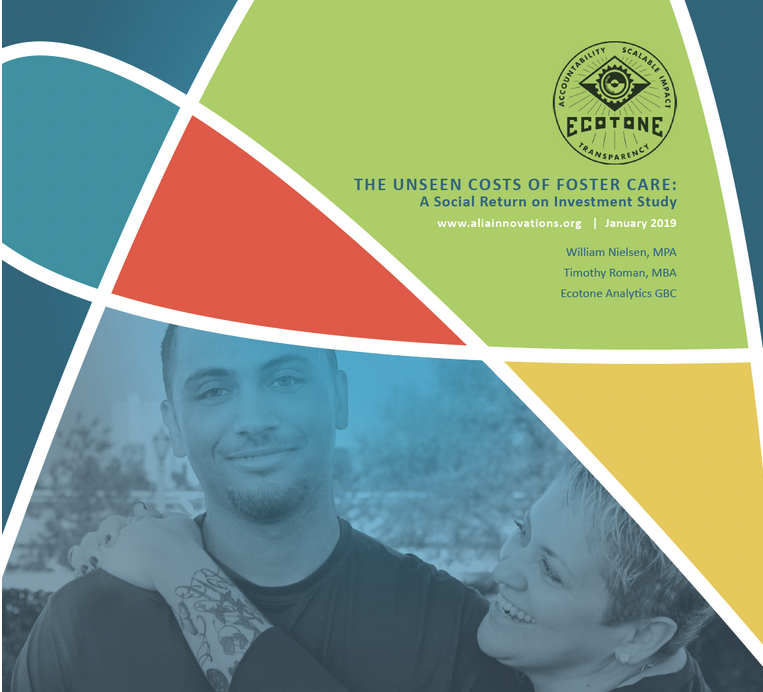
For every $1 spent on foster care in the United States, we lose $3.84.
Our social return on investment study, commissioned by Ecotone Analytics, concludes that the long term outcomes of two scenarios (a typical, “successful” foster care experience and a poor experience) are negative and include outcome costs to both the child and to the public of reduced well-being.
Executive Summary
To address the complexity of the foster care system, Ecotone has mapped the long-term outcomes for youth in two scenarios:
Scenario 1 involves a child with a typical, “successful” foster care experience in terms of time in care, treatment, permanency achieved following care, and so on. Scenario 2 involves a child with a poor experience (but not worst case scenario), having spent a longer time in care, suffering repeated placements and multiple caseworkers, and eventually aging out of care.
Given available data, the child of Scenario 2 has considerably worse long term monetized outcomes (-$624,943.90 relative to general population) than that of the child in Scenario 1 (-$119,068.97 relative to general population).
The resulting Social Return on Investment (SROI) for each child is: Scenario 1: -$3.64 and Scenario 2: -$9.55. This implies that for every $1 dollar spent on child 1, the resulting future value created is approximately -$3.64. (In essence, investment in foster care has multiplied the future long term negative outcomes far beyond those occurring in the general population.)

